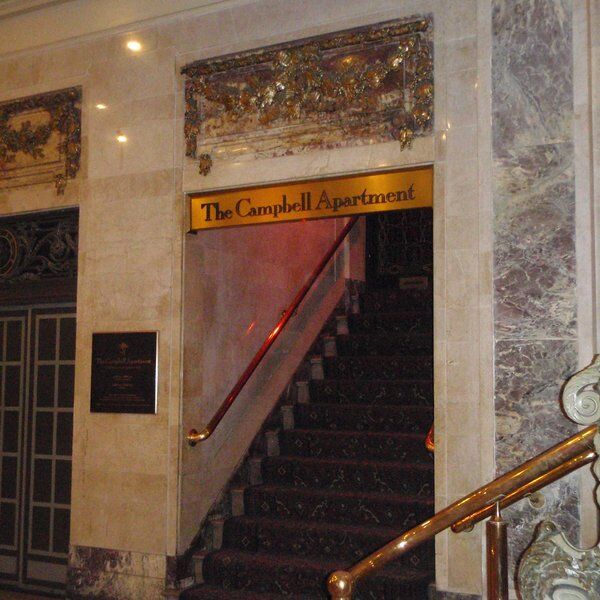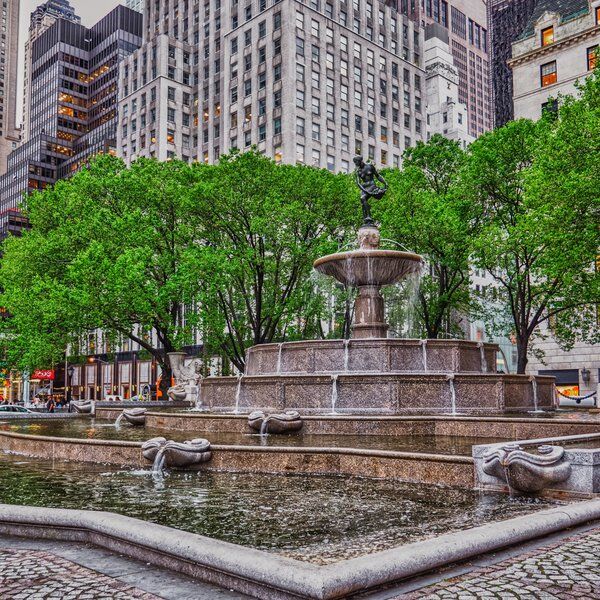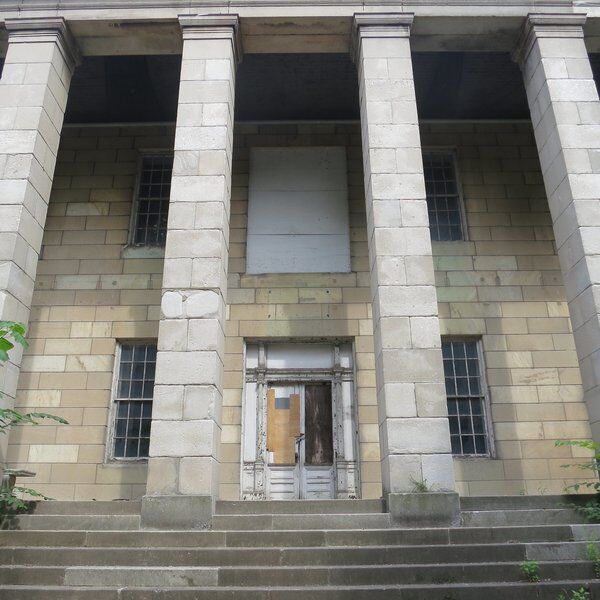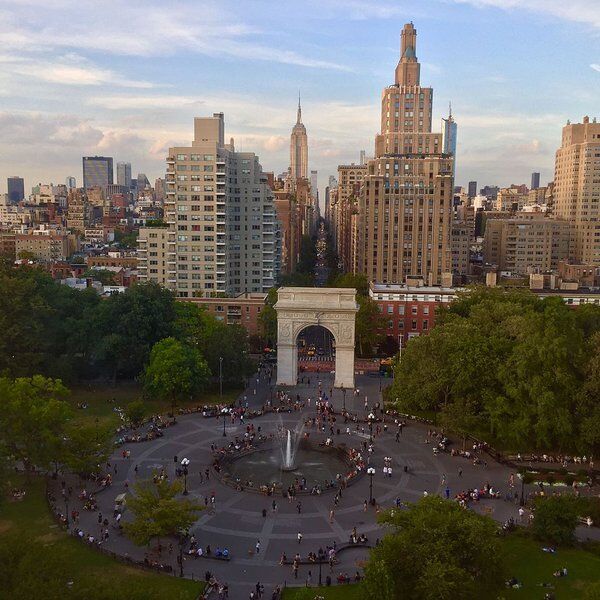Discover Morningside Park in New York City
Morningside Park, situated between Harlem and Morningside Heights in Manhattan, is one of New York City's hidden treasures. Spanning 30 acres and stretching 13 blocks, this narrow strip of greenery is not only a designated Scenic Landmark but also one of the four Historic Harlem Parks.
The park has a unique layout with steep cliffs and winding paths. Visitors can enjoy scenic overlooks and peaceful walking paths throughout the park. Be sure to visit the playgrounds if you're with children, or take a moment to relax by the pond and enjoy the sounds of the waterfall, one of the parks main features.
A Glimpse into Morningside Park's History
Morningside Park has been around long before it was officially recognized as a park. The area was originally known as Muscoota, meaning "flat place" or "plain" by the Lenape Native Americans. In the 17th century, Dutch settlers called it Vredendal, or "Peaceful Dale," while the land was later referred to as Vandewater Heights after a Dutch landowner, who acquired the property in the 18th century.
Morningside Park's history is also marked by conflict, including during the Revolutionary War. The area served as a retreat route for colonial forces during the Battle of Harlem Heights on September 16, 1776. To defend the area during the War of 1812, three blockhouse fortifications were constructed along the cliff that now forms the park's western boundary. While these fortifications eventually fell into disrepair and were removed by 1915, they are a sign of the park's significance in American history.
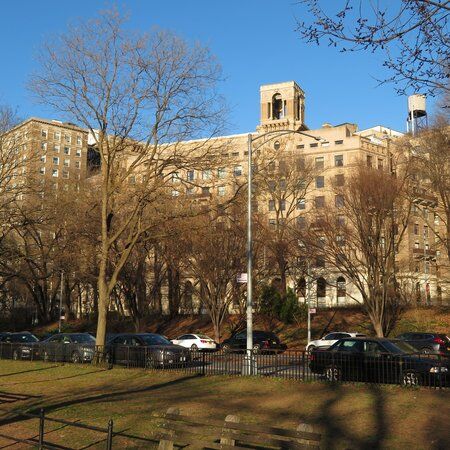
Creating Morningside Park
Initial Planning and Design
The park's creation was first proposed in 1867 by Andrew Haswell Green, Commissioner of Central Park. Green recognized that the area’s steep topography made it unsuitable for the grid system of streets that was spreading across Manhattan. Instead, he advocated for a park that would preserve the natural landscape.
In 1870, the City of New York gained jurisdiction over the 30-acre property, and in 1871 the Central Park Commission tasked Montgomery A. Kellogg, the Department of Public Parks' chief engineer, with designing the park.
Kellogg's plan featured walking paths, flower beds, fountains, and a playground, reflecting the popular Victorian-style park design. However, the Board of Commissioners rejected this initial design, seeking more from Morningside Park.
Olmsted and Vaux's Design
In 1872, Frederick Law Olmsted and Calvert Vaux were brought on board to rethink Morningside Park's design. This was the same duo behind Central Park and some of its features, including Bow Bridge. Their 1873 plan emphasized beauty, with features like balconies, a lagoon, and a prominent retaining wall, while keeping the natural topography of the land.
Construction Begins
Construction of Morningside Park officially started in 1873, focusing initially on infrastructure such as sewers, embankments, and perimeter walls. However, progress was slow due to economic challenges. The construction stalled for several years, leaving much of the park in a dire state.
In 1880, Jacob Wrey Mould, an architect who had also worked on Central Park, was appointed to rework the initial design. Mould's contribution included the promenade and the buttressed masonry wall that still runs along Morningside Drive. However, Mould's untimely death in 1886 halted progress once again.
Finalizing the Park
Fourteen years after initially rejecting their plan, the Board of Commissioners once again turned to Olmsted and Vaux in 1887 to complete the park. This time, the architects adapted their design. They introduced two primary pathways—a broad path and a meandering one—designed to guide visitors through the park's lower sections while preserving the natural landscape.
Vaux, who saw the project through to its completion in 1895, considered Morningside Park one of his finest achievements. His contributions ensured that the park harmonized with the rugged terrain.
Reconstruction of Morningside Park
Early 20th Century and Decline
Following its completion in 1895, Morningside Park became an integral part of the Morningside Heights neighborhood, which was rapidly developing. However, by the mid-20th century, the park had begun to suffer from neglect and decline in use. The social upheaval of the 1960s, combined with a lack of maintenance, led to a period of deterioration where the park became known for crime and disrepair, earning the nickname "Muggingside Park."
Late 20th Century Revival
The park's decline continued into the 1970s, exacerbated by the economic crises of the time. Efforts to restore the park were often hindered by financial constraints. However, the formation of the Friends of Morningside Park in the 1980s marked a turning point. This nonprofit organization was dedicated to the park's upkeep and improvement. Along with other local organizations, it began advocating for the park's restoration, focusing on returning it to the original Olmsted and Vaux design.
In the late 1980s, a significant restoration project was launched, spearheaded by NYC Parks and partially funded by Columbia University. The project included the transformation of the abandoned site of the Columbia gymnasium into a waterfall and ornamental pond. This restoration was completed in phases, with major improvements to playgrounds, sports fields, and entrances, particularly between 110th and 114th Streets.
21st Century Improvements
Entering the 21st century, Morningside Park saw continued efforts to increase its safety. A plan approved in 2001 guided much of this work, resulting in the renovation of several park entrances, the rebuilding of ballfields, and the construction of new playgrounds.
These improvements helped to reshape the park's image and were recognized in 2008 with the park’s designation as an official scenic landmark by the New York City Landmarks Preservation Commission. The park's ongoing restoration efforts included the planting of more trees, the repair of the park's six-acre pond and waterfall, and the renovation of the northern playgrounds, which were completed in 2021.
Recent Developments
The park has continued to evolve with the neighborhood around it. Gentrification in the surrounding area has brought new resources and attention to Morningside Park, though concerns about safety persist, especially following high-profile crimes in recent years.
In 2023, the Landmarks Preservation Commission approved plans for a new food kiosk at the park's southern edge, signaling a continued investment in making the park a central gathering place for the community.

Features of Morningside Park
Recreational Features
The southern end of the park is home to two baseball fields and a basketball court, while the central and northern sections feature additional basketball courts and handball courts. The park also hosts a weekly 3-mile Open Run, organized by the New York Road Runners. It’s a great way for locals and visitors to stay active.
For families, there are children's play areas scattered throughout the park, located at 110th, 113th, 116th, 118th, and 123rd Streets. The playground at 117th Street was opened in 2021 with modern amenities like ping pong tables, chess boards, and a workout area.
For dog owners, the Morningside Dog Run is a fenced-in space where dogs can play off-leash. This area is maintained by a dedicated group of volunteers and is a popular gathering spot for dog lovers from across the neighborhood. If you're planning a picnic, head to the barbecue area at 121st Street.
Natural and Geological Features
One of the most striking features of the park is its rugged landscape, dominated by a 100-foot cliff of Manhattan schist that divides Morningside Heights from Harlem. This geological formation, shaped by fault movement and glacial activity, offers a glimpse into the bedrock that lies beneath most of Manhattan. The cliff also creates a natural boundary that gives the park its distinctive shape and unique character.
In addition to its terrain, Morningside Park is home to a variety of natural attractions, including the Dr. Thomas Kiel Arboretum, named after a Columbia University student and co-founder of the Friends of Morningside Park. This arboretum, located in the northern section of the park, was inspired by the original plans for Central Park.
Visitors can also enjoy the park's waterfall and pond. These features have become a good spot for birdwatchers, with species like great blue herons and mallard ducks frequently sighted around the pond.
Art and Monuments
There are two important sculptures in Morningside Park. The Carl Schurz Monument, located at 116th Street, honors the German-American statesman and is an excellent example of early 20th-century sculpture. It was created by sculptor Karl Bitter and architect Henry Bacon in 1913. The following year the Seligman Fountain was built by Edgar Walter. It is a whimsical depiction of a bear and faun.
Programs and Events
The Friends of Morningside Park, organizes a variety of programs and events throughout the year. These include arts and cultural festivals, outdoor film screenings, musical performances, and sports tournaments. The Harlem Youth Gardeners program, which engages local teens in gardening and park maintenance, is another highlight of the park's community initiatives.
One of the park's most anticipated developments is the opening of the Morningside Cafe, expected late in 2024. Located at the southern end of the park, the cafe will offer a seasonal menu featuring seafood from local favorite Crabman Mike. It’s predicted that this new addition will become a popular spot for park visitors.
Visiting Morningside Park
Morningside Park is easily accessible from several surrounding neighborhoods, including Morningside Heights, Harlem, and Manhattanville. The park is bordered by Morningside Drive to the west, Manhattan Avenue to the east, and West 110th Street to the south, with numerous entrances along these streets.
Explore Beyond Morningside Park in NYC with CityDays
While Morningside Park is a fantastic destination in its own right, there are countless other adventures to be had across New York City.
With CityDays, you can explore the city like never before through our scavenger and treasure hunt tours, and in particular our Southern Tip and Slow Boat to Chinatown Hunts? These ones delve into the history of their respective areas whilst uncovering incredible landmarks along the way, which we think you’ll enjoy!
Scavenger Hunt tours are a great way to bring family and friends—or even dates—together for an afternoon of great fun and adventure, solving clues and snapping photos. Clues will lead you to the big sights and those that you'd walk straight past.
For more information about our New York Hunts then click here: NYC Scavenger & Treasure Hunts | CityDays.


